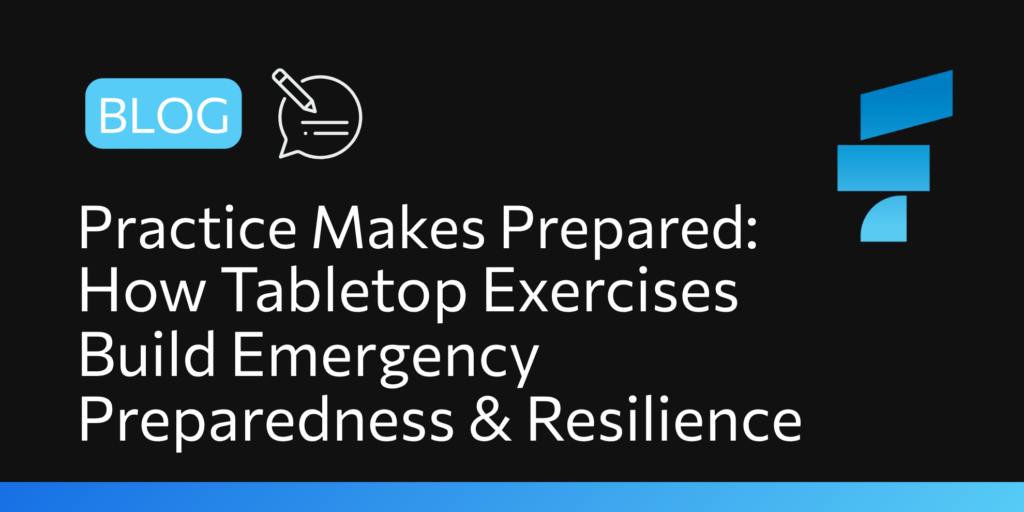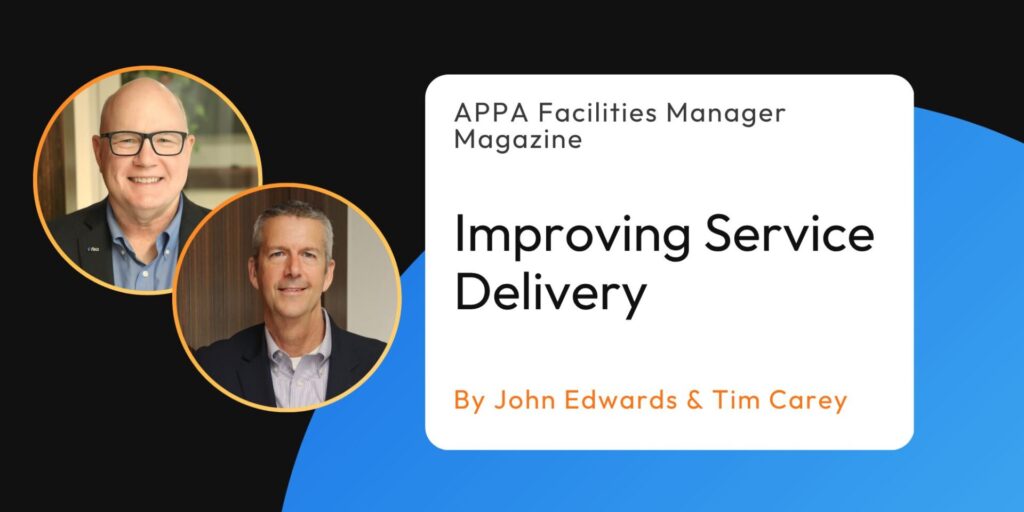Tabletop Exercise Planning Strategies
By Maureen Roskoski, CFM, SFP, ProFM, CPSI, ISO 22301 Lead Auditor
Imagine this: Your building is threatened by a raging wildfire, or your network is paralyzed by a cyberattack, or operations grind to a halt because a key facility is suddenly forced to shut down. Would your team know what to do? Would everyone act with clarity and confidence – or would confusion slow your response?
These aren’t far-fetched “what-ifs.” They are real, increasingly common threats that organizations face every day. And the difference between chaos and control often comes down to one thing: preparation.
The best way to prepare for them isn’t waiting and hoping – it’s planning and practicing.
That’s where tabletop exercises come in. These simulated emergency scenarios help turn plans into action, revealing gaps, reinforcing roles, and building the confidence teams need to respond swiftly and effectively.
“Running through a tabletop exercise really helped bring our emergency plan to life,” said Lauren Hubbard, Visual Communications Lead. “It gave us a chance to ask the hard questions, find gaps we hadn’t thought about, and build confidence as a team before a crisis ever happens.”
What Are Tabletop Exercises?
A tabletop exercise is a structured, discussion-based simulation of a hypothetical emergency scenario. It brings together key personnel to walk through their roles, decision-making responsibilities, and communication processes during a crisis.
Unlike live drills, tabletop exercises are held in a meeting room or virtual setting and focus on strategic thinking, coordination, and response readiness. They don’t require physical movement or equipment deployment but are equally essential for ensuring your team is prepared.
Why Tabletop Exercises Matter
Creating an emergency response or business continuity plan is a critical first step in building resilience, but without testing it, you don’t know if your plan will work of if your team knows what to do.
Tabletop exercise planning helps you:
- Clarify roles and responsibilities across departments
- Test communication systems, especially in low-tech or no-tech conditions
- Evaluate decision-making processes under pressure
- Identify operational blind spots before a real emergency exposes them
- Improve interdepartmental coordination and scenario planning
They’re also cost-effective, adaptable, and scalable for any type of organization – from a small facility to complex multi-campus organization.
Designing an Effective Tabletop Exercise
Not all tabletop exercises are created equal. Here’s how to build one that’s meaningful, engaging, and productive:
- Define the Objective
Are you testing communication protocols? Decision-making under pressure? Recovery timelines? Be clear on what you’re evaluating and what outcome you want to achieve.
- Choose a Relevant Scenario
Select a realistic and high-impact scenario based on your geographic location, threat profile, or operational vulnerabilities. Examples include:
- Natural disasters (wildfires, hurricanes, earthquakes)
- Cyberattacks
- Utility failures
- Workplace violence
- Hazardous materials incidents
- Assemble the Right Team
Include participants from key departments including facilities, operations, IT, HR, leadership, communications, and emergency services. Be sure to assign a facilitator and a notetaker.
- Walk Through the Timeline
Progress the scenario in phases (e.g., initial alert, 2 hours later, 1 day later) and prompt the group with questions:
- What actions should be taken?
- Who communicates with whom?
- What resources are needed?
- How are decisions made?
- Debrief and Improve
After the simulation, conduct a thorough debrief. What worked? What didn’t? What changes need to be made to your plan, systems, or training? Document lessons learned and assign follow-up tasks.
What Tabletop Exercises Can Reveal
Here are a few critical insights tabletop exercises can uncover:
- Communication Gaps: Can your team coordinate if email, phones, and internet fail? Have you practiced low-tech alternatives?
- Unclear Roles: Who has decision-making authority? Do people know who to report to?
- Logistical Considerations: Are your go-bags stocked? Do you know your backup power limits? Are data backups accessible?
- Continuity Weaknesses: Can core operations run offsite? Are vendors and contractors included in the response plan?
These insights are invaluable and they only surface when plans are tested in a realistic, guided setting.
At FEA, we practice what we preach. Every year, we conduct an internal tabletop exercise to test and refine both our emergency preparedness and business continuity plans. These sessions bring together team members across departments to simulate real-world scenarios, evaluate our response strategies, and identify opportunities for improvement. By regularly testing our plans in a controlled, collaborative environment, we strengthen our ability to respond effectively when disruptions occur – ensuring we can continue to serve our clients without interruption.
From Plans to Practice
Emergency preparedness and business continuity can’t rely on paperwork alone. They must be woven into the culture of the organization through regular testing, training, and adaptation.
Tabletop exercise planning is the a cornerstone of that culture. They allow your team to:
- Think critically in a safe environment
- Practice coordinated responses
- Identify points of failure before a real crisis occurs
Whether you’re safeguarding a single facility or an entire campus, tabletop exercises bring clarity, confidence, and coordination when it matters most.
Ready to Start?
To conduct your first tabletop exercise or level up your existing program, begin with a focused scenario, a clear goal, and a committed team. And remember: every hour spent preparing is an hour gained when disaster strikes.
Whether you need help designing your first tabletop exercise or want an expert perspective on your current preparedness efforts, we’re here as a resource. Our team has deep experience facilitating scenario-based exercises, developing customized response plans, and guiding organizations toward greater resilience and preparedness. Click here to get started.




